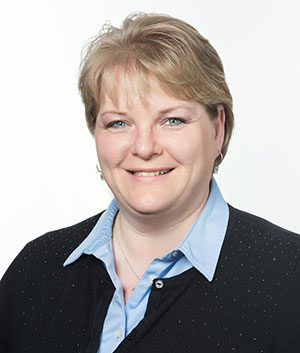Technology is built into everything we do – how we work, what we play, how we learn, where we eat and especially how we communicate. Yet many people do not recognize that technology is weaved into the very fiber of their lives, for the very fact that it is omnipresent. At the center of technology is code. You might be thinking, “So what?” I encourage you to instead ask yourself, “So, what’s next?”
In 2017, technology was designated as one of the Portland-Vancouver Metropolitan Region’s high-growth, high-demand workforce sectors by Workforce Southwest Washington (WSW) and its partners in the Columbia-Willamette Workforce Collaborative (CWWC), due in large part to the demand for software developers. Interestingly, however, two-thirds of technology jobs lay outside of the tech sector. This means there are more software developers, network administrators and data analysts working for hospitals, school districts and financial institutions than there are working for tech companies.
You likely work alongside some of these tech folks every day. So, what’s next? Investigate the variety of technology jobs in demand in the region at www.careersnw.org.
Occupations in every industry are becoming more technologically advanced, often requiring some basic knowledge of code. Yet unless you work in a tech occupation, most of us do not think about the code in action when we swipe a credit card, send a text, snap a photo or turn on our car, much less how it impacts our work. These routine actions are carried out in autopilot because we cannot see the technology working.
Think about the last time you paid your bill at a restaurant. Did you hand your debit card to a server or swipe it through a machine? So, what’s next? Discover the technology behind your routines. Go to www.pbs.org/nova and search “physics behind texting” to learn how a text message is sent.
Once you understand how code is present in your life, even in the smallest way, it gives you a glimpse of how widely code is embedded in everything you do, and how important it is to grasp the essentials of code.
So, what’s next? I challenge you to learn to code. It is not as hard to get started as you might believe, and just about anything you want to know about coding can be learned online for free if you have the desire to learn and the drive to stick with it. One of the best places to begin learning to code is to visit www.code.org, which houses a wealth of resources for persons of any age to learn to code easily and while having fun. Once you’ve mastered code.org, move on to www.codeacademy.com, a site where you can teach yourself the fundamentals of HTML, CSS, Java, JavaScript, SQL, Python and Ruby.
Whether you want to learn code to understand your world or to develop skills for your career, code is today, code is the future and code is for everyone. A child can learn to code as they learn their ABC’s. Parents and grandparents can learn alongside children or on their own. The important thing is to understand how code influences your life, and how your life influences the code being used today and developed for tomorrow.
So, what’s next? Challenge yourself to investigate, discover, learn and understand your world through code.
Cass Parker is the senior industries initiatives manager at Workforce Southwest Washington, overseeing technology and manufacturing sectors. She is always happy to meet with businesses to discuss their workforce hiring and training needs. She is seeking tech business leaders and those who employ large numbers of tech workers to participate in an industry panel to share their views about Southwest Washington’s tech workforce and education needs. Reach Cass at cparker@workforcesw.org or (360) 567-1076.


